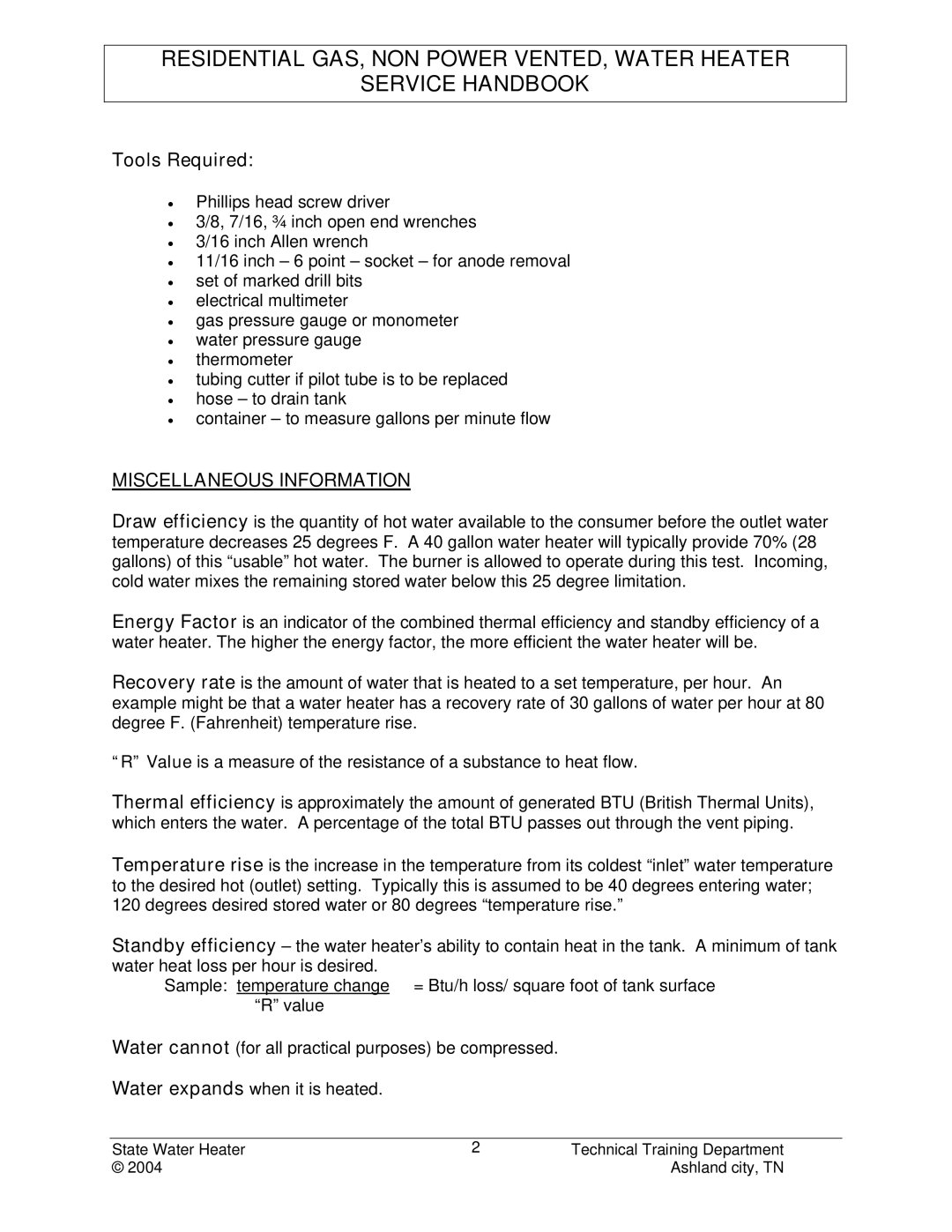STC-080 specifications
The State Industries STC-080 is a high-efficiency water heater designed to meet the demands of residential and light commercial applications. With its strategic engineering and innovative technology, it offers a reliable solution for those seeking comfort, efficiency, and sustainability in water heating.One of the main features of the STC-080 is its exceptional efficiency rating. It operates with an impressive Energy Factor (EF) that not only reduces energy consumption but also translates into lower utility bills for users. The unit utilizes a streamlined heat exchanger design, optimizing heat transfer and minimizing energy loss. This design ensures that users can enjoy hot water on demand without the worry of excessive energy expenditure.
The STC-080 is equipped with advanced heating technologies, including a dual-flame burner system. This system ensures rapid heating while providing consistent water temperature, which is essential for residential applications where demand can vary throughout the day. The integration of advanced controls also allows for precise temperature adjustments, giving users full control over their hot water supply.
Durability and reliability are key characteristics of the STC-080. Constructed from high-quality materials, it features a heavy-duty steel tank with a glass-lined interior that provides excellent corrosion resistance. This not only enhances the product's longevity but also ensures consistent performance even in challenging water conditions. Additionally, the unit includes an anode rod that further protects against corrosion, extending service life and reducing maintenance needs.
The STC-080 is designed for easy installation, with flexibility that accommodates various plumbing setups. Its compact design allows for placement in tighter spaces, making it an ideal choice for homes where space is at a premium.
Safety is another priority with the STC-080. It includes multiple safety features such as a temperature and pressure relief valve, ensuring safe operation. The unit also complies with stringent industry standards, providing peace of mind to homeowners and businesses alike.
In summary, the State Industries STC-080 is a standout water heating solution that combines efficiency, reliability, and advanced technology. With its robust construction and user-friendly features, it caters to the evolving needs of both residential and light commercial users, making it an excellent investment for those looking to enhance their water heating systems while being conscious of energy usage.

